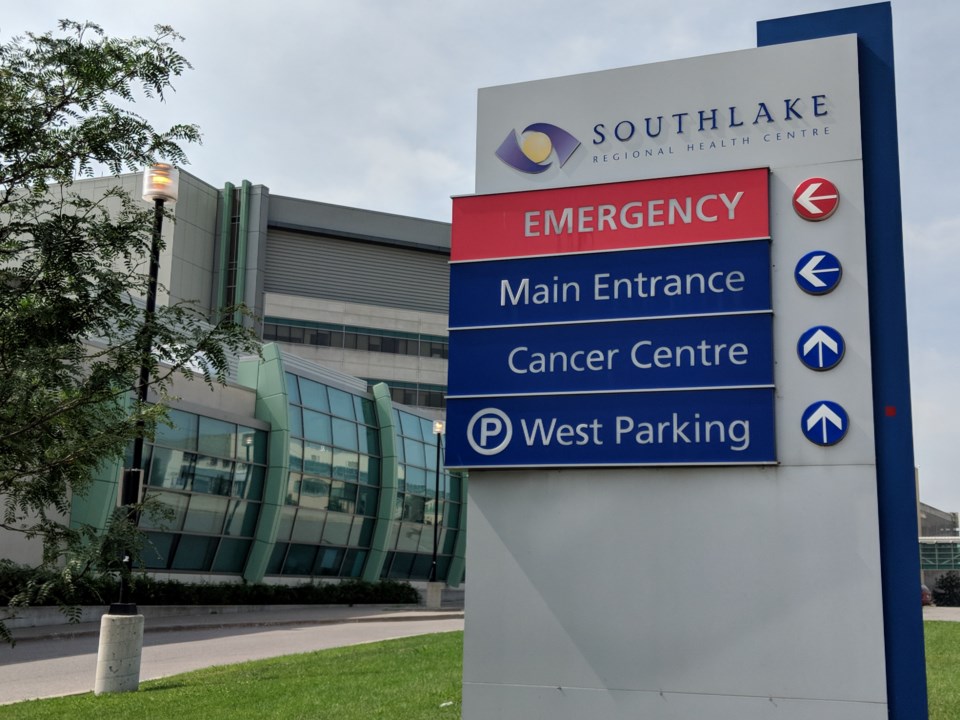The COVID-19 outbreak at Southlake Regional Health Centre is currently confined to one unit.
A health-care worker tested positive for COVID-19 on April 28, and two patients on a unit where the staff member worked tested positive on April 29.
"In both instances, Southlake was able to use our staff RFID badge system to immediately identify the staff and physicians who had contact with either the staff member or the patient. All of these individuals are being tested for COVID-19," according to Michelle Lee Hoy, Southlake corporate communications spokesperson.
In addition, every patient on the unit and every staff member and physician who has worked on the unit will be tested, Lee Hoy said.
The unit has been closed to admissions, and all patients in the unit have been placed on droplet and contact precautions, she added.
According to Public Health Ontario, droplet and contact precautions include having health-care workers wear surgical/procedure masks, isolation gowns, gloves and goggles or face shields.
Additionally, Southlake is now testing all patients admitted through its emergency department, regardless of their symptoms, Lee Hoy said.
Southlake has now had a total of six staff members and physicians test positive for COVID-19, four of whom have fully recovered, she added.
In regards to those additional COVID-19 cases, an outbreak is only declared when the investigation by public health of infected health-care workers determines that the illness was acquired in the hospital, according to York Region spokesperson Patrick Casey.
Health-care workers who have tested positive are permitted to return to work after two consecutive negative swabs taken at least 24 hours apart, he added.
The Newmarket hospital is working closely with York Region public health to manage the outbreak, Lee Hoy said.
As soon as an outbreak is declared in an institutional setting, such as long-term care home, retirement home or hospital, standard outbreak control measures recommended by the Ministry of Health and Public Health Ontario are implemented in all areas affected by the outbreak, Casey said, including:
- Increasing cleaning and disinfection in the affected areas, as well as common areas (dining room, lobby, shared bathrooms, entrances);
- Screening all residents/patients twice a day for fever or new symptoms of cough or shortness of breath;
- Isolating ill patients/residents to their rooms and providing meal service via tray service to resident rooms;
- Excluding ill staff from the workplace;
- Implementation of additional infection prevention and control precautions by staff (use of personal protective equipment and droplet/contact precautions);
- Cancelling group activities;
- Active monitoring for new cases of illness in either residents or staff and daily reporting to public health.
